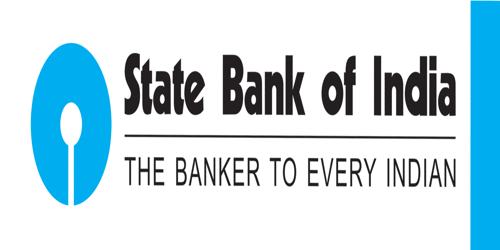In May, 1886, Coca Cola was invented by Doctor John Pemberton a pharmacist from Atlanta, Georgia. John Pemberton concocted the Coca Cola formula in a three legged brass kettle in his backyard. The name was a suggestion given by John Pemberton’s bookkeeper Frank Robinson.
Birth of Coca Cola
Being a bookkeeper, Frank Robinson also had excellent penmanship. It was he who first scripted “Coca Cola” into the flowing letters which has become the famous logo of today.
The soft drink was first sold to the public at the soda fountain in Jacob’s Pharmacy in Atlanta on May 8, 1886.
About nine servings of the soft drink were sold each day. Sales for that first year added up to a total of about $50. The funny thing was that it cost John Pemberton over $70 in expanses, so the first year of sales were a loss.
Until 1905, the soft drink, marketed as a tonic, contained extracts of cocaine as well as the caffeine-rich kola nut.
Asa Candler
In 1887, another Atlanta pharmacist and businessman, Asa Candler bought the formula for Coca Cola from inventor John Pemberton for $2,300. By the late 1890s, Coca Cola was one of America’s most popular fountain drinks, largely due to Candler’s aggressive marketing of the product. With Asa Candler, now at the helm, the Coca Cola Company increased syrup sales by over 4000% between 1890 and 1900.
Advertising was an important factor in John Pemberton and Asa Candler’s success and by the turn of the century, the drink was sold across the United States and Canada. Around the same time, the company began selling syrup to independent bottling companies licensed to sell the drink. Even today, the US soft drink industry is organized on this principle.
Death of the Soda Fountain – Rise of the Bottling Industry
Until the 1960s, both small town and big city dwellers enjoyed carbonated beverages at the local soda fountain or ice cream saloon. Often housed in the drug store, the soda fountain counter served as a meeting place for people of all ages. Often combined with lunch counters, the soda fountain declined in popularity as commercial ice cream, bottled soft drinks, and fast food restaurants became popular.
The Coca Cola CompanyTypePublic companyTraded asNYSE: KO
Dow Jones Industrial Average ComponentIndustryBeverageFounded1892HeadquartersAtlanta, Georgia, United StatesArea servedWorldwideKey peopleMuhtar Kent (Chairman and CEO)ProductsCoca-Cola
Carbonated Soft Drinks
Water
Other Non-alcoholic beverages[1]Revenue US$ 35.119 billion (2010)[2]Operating income US$ 8.449 billion (2010)[2]Net income US$ 11.809 billion (2010)[2]Total assets US$ 72.921 billion (2010)[2]Total equity US$ 31.317 billion (2010)[2]Employees139,600 (2010)[2]WebsiteOfficial website
History
Old German Coca-Cola bottle opener
Believed to be the first coupon ever, this ticket for a free glass of Coca-Cola was first distributed in 1888 to help promote the drink. By 1913, the company had redeemed 8.5 million tickets.
This Coca-Cola advertisement from 1943 is still displayed in the small city of Minden, Louisiana.
The prototype Coca-Cola recipe was formulated at the Eagle Drug and Chemical Company, a drugstore in Columbus, Georgia by John Pemberton, originally as a coca wine called Pemberton’s French Wine Coca.[3][4][5] He may have been inspired by the formidable success of Vin Mariani, a European coca wine.
In 1886, when Atlanta and Fulton County passed prohibition legislation, Pemberton responded by developing Coca-Cola, essentially a non-alcoholic version of French Wine Coca. The first sales were at Jacob’s Pharmacy in Atlanta, Georgia, on May 8, 1886. It was initially sold as a patent medicine for five cents a glass at soda fountains, which were popular in the United States at the time due to the belief that carbonated water was good for the health. Pemberton claimed Coca-Cola cured many diseases, including morphine addiction, dyspepsia, neurasthenia, headache, and impotence. Pemberton ran the first advertisement for the beverage on May 29 of the same year in the Atlanta Journal.
By 1888, three versions of Coca-Cola — sold by three separate businesses — were on the market. Asa Griggs Candler acquired a stake in Pemberton’s company in 1887 and incorporated it as the Coca Cola Company in 1888.[12] The same year, Pemberton sold the rights a second time to four more businessmen: J.C. Mayfield, A.O. Murphey, C.O. Mullahy and E.H. Bloodworth. Meanwhile, Pemberton’s son Charley Pemberton began selling his own version of the product.[13]
John Pemberton declared that the name “Coca-Cola” belonged to Charley, but the other two manufacturers could continue to use the formula. So, in the summer of 1888, Candler sold his beverage under the names Yum Yum and Koke. After both failed to catch on, Candler set out to establish a legal claim to Coca-Cola in late 1888, in order to force his two competitors out of the business. Candler purchased exclusive rights to the formula from John Pemberton, Margaret Dozier and Woolfolk Walker. However, in 1914, Dozier came forward to claim her signature on the bill of sale had been forged, and subsequent analysis has indicated John Pemberton’s signature was most likely a forgery as well.[14]
In 1892 Candler incorporated a second company, The Coca-Cola Company (the current corporation), and in 1910 Candler had the earliest records of the company burned, further obscuring its legal origins. By the time of its 50th anniversary, the drink had reached the status of a national icon in the USA. In 1935, it was certified kosher by Rabbi Tobias Geffen, after the company made minor changes in the sourcing of some ingredients.
Coca-Cola was sold in bottles for the first time on March 12, 1894. The first outdoor wall advertisement was painted in the same year as well in Cartersville, Georgia. Cans of Coke first appeared in 1955. The first bottling of Coca-Cola occurred in Vicksburg, Mississippi, at the Biedenharn Candy Company in 1891. Its proprietor was Joseph A. Biedenharn. The original bottles were Biedenharn bottles, very different from the much later hobble-skirt design that is now so familiar. Asa Candler was tentative about bottling the drink, but two entrepreneurs from Chattanooga, Tennessee, Benjamin F. Thomas and Joseph B. Whitehead, proposed the idea and were so persuasive that Candler signed a contract giving them control of the procedure for only one dollar. Candler never collected his dollar, but in 1899 Chattanooga became the site of the first Coca-Cola bottling company.[18] The loosely termed contract proved to be problematic for the company for decades to come. Legal matters were not helped by the decision of the bottlers to subcontract to other companies, effectively becoming parent bottlers.[19]
Coke concentrate, or Coke syrup, was and is sold separately at pharmacies in small quantities, as an over-the-counter remedy for nausea or mildly upset stomach.
Mission, Vision & Values
The world is changing all around us. To continue to thrive as a business over the next ten years and beyond, we must look ahead, understand the trends and forces that will shape our business in the future and move swiftly to prepare for what’s to come. We must get ready for tomorrow today. That’s what our 2020 Vision is all about. It creates a long-term destination for our business and provides us with a “Roadmap” for winning together with our bottling partners.
Our Mission
Our Roadmap starts with our mission, which is enduring. It declares our purpose as a company and serves as the standard against which we weigh our actions and decisions.
- To refresh the world…
- To inspire moments of optimism and happiness…
- To create value and make a difference.Our Vision
Our vision serves as the framework for our Roadmap and guides every aspect of our business by describing what we need to accomplish in order to continue achieving sustainable, quality growth.
- People: Be a great place to work where people are inspired to be the best they can be.
- Portfolio: Bring to the world a portfolio of quality beverage brands that anticipate and satisfy people’s desires and needs.
- Partners: Nurture a winning network of customers and suppliers, together we create mutual, enduring value.
- Planet: Be a responsible citizen that makes a difference by helping build and support sustainable communities.
- Profit: Maximize long-term return to
- shareowners while being mindful of our overall responsibilities.
- Productivity: Be a highly effective, lean and fast-moving organization.
Our Winning Culture
Our Winning Culture defines the attitudes and behaviors that will be required of us to make our 2020 Vision a reality.
Live Our Values
Our values serve as a compass for our actions and describe how we behave in the world
- Leadership: The courage to shape a better future
- Collaboration: Leverage collective genius
- Integrity: Be real
- Accountability: If it is to be, it’s up to me
- Passion: Committed in heart and mind
- Diversity: As inclusive as our brands
- Quality: What we do, we do wellFocus on the Market
- Focus on needs of our consumers, customers and franchise partners
- Get out into the market and listen, observe and learn
- Possess a world view
- Focus on execution in the marketplace every day
- Be insatiably curiousWork Smart
- Act with urgency
- Remain responsive to change
- Have the courage to change course when needed
- Remain constructively discontent
- Work efficientlyAct Like Owners
- Be accountable for our actions and inactions
- Steward system assets and focus on building value
- Reward our people for taking risks and finding better ways to solve problems
- Learn from our outcomes — what worked and what didn’tBe the Brand
Inspire creativity, passion, optimism and fun
Drafting a business plan seems not so simple. It could take days or even months. This forms part of the planning process where the plan is used as a guide– a handbook that serves as a manual on how a business is to be operated effectively.
Although an entrepreneur doesn’t really have to strictly adhere to what is inside the business plan, the guide is very relevant for perusal, for direction and for evaluation.
Here are the aspects a business plan constitutes
- Management
- Marketing
- Technical
- Taxation
- Legal
- Financial and financing, profitability,
- Economic, and social desirability.
Management Aspect
The study of the management aspect consists of the construction of the business structure. This involves the creation of the organizational chart; the definition of job description of line and staff functions and the elaboration of the chain of command in the company. The management aspect also provides the mission, vision and by-laws for the effective operation of the company.
Marketing Aspect
The marketing aspect puts into summary outline with the details the demand and supply relationship that a business produces and/or sells. It ascertains the projected demand and attainable supply. At most instance, marketing study is implemented– integrating potential markets survey and statistics. Collating and collecting data from the geographic and demographic market form part of the marketing aspect. Data generated will be used in the projected financial statements.
Technical Aspect
The Technical aspect involves the technology to be used. This ascertains the type of system, the capacity, the materials and other industrial factors to achieve the ends of the company effectively and efficiently.
The location of the business where the schematic diagram of the area the enterprise is proposed to be stationed is part of the Technical aspect.
Taxation
The taxation aspect covers the monetary obligation of the company to the government. This covers the effects of tax, the creation of tax saving measures, and tax incentives.
Integrating the required tax forms depending on the type of business organization your proposed business belongs to can be very useful. Making it a reference should an entrepreneur deal with the bookkeeper and accountant can be beneficial— for knowledge and benchmarking purposes
Legal Aspect
The legal aspect involves ascertaining any government guidelines and regulations to the proposed business. It also involves knowing any incentives and protection the government can offer to the proposed business.
In this aspect, an entrepreneur may integrate the forms and procedures in registering the business.
Financial Aspect
This section seems complicated for budding entrepreneurs who may have difficulty in drafting budgeted financial statements and reports. Project financial statements are integrated based on the marketing studies, the objectives, the taxation as translated in tax amounts, the legal aspect as pertaining to the organization costs and the management aspect where the cost of labor, utilities and other expenses are to be included.
Consulting a bookkeeper or an accountant can be helpful when dealing with the Financial aspect of a business plan. However, if the business is a micro one or small, templates the can be found online, mostly in Excel format can be used– for fill-up and automatic calculation on the projected costs, gross income, taxable net income and the net income as budgeted.
Moreover, in this section, an entrepreneur can assess if there is a need for financing or the capital invested solely by the entrepreneur is sufficient to survive and eventually sustain the business during the start-up phase.
Feasibility of the business plan as determined on the financial and economic benefits and social responsibility.
Economic benefit is one of the emerging aspect in a business plan. Social responsibility is taking recognition in the business community. This involves taking into consideration the interest of the
nation/government to the proposed business. This also includes the environmental impact on the proposed business. Considering the great influence of the government in the success of any business endeavor, every proponent must take into consideration the interest of the government. Every proponent must make sure that the business is in congruent with the socio-economic plans of both the local and national government. On the other hand, environmental penalties and taxes are very high in cost. So, prevention is better than cure.
A business process comprises a “series or network of value-added activities, performed by their relevant roles or collaborators, to purposefully achieve the common business goal.”[3] These processes are critical to any organization: they may generate revenue and often represent a significant proportion of costs. As a managerial approach, BPM considers processes to be strategic assets of an organization that must be understood, managed, and improved to deliver value added products and services to clients. This foundation is very similar to other Total Quality Management or Continuous Improvement Process methodologies or approaches. BPM goes a step further by stating that this approach can be supported, or enabled, through technology to ensure the viability of the managerial approach in times of stress and change. In fact, BPM is an approach to integrate a “change capability” to an organization – both human and technological. As such, many BPM articles and pundits often discuss BPM from one of two viewpoints: people and/or technology.
Roughly speaking, the idea of (business) process is as traditional as concepts of tasks, department, production, outputs.[citation needed] The current management and improvement approach, with formal definitions and technical modeling, has been around since the early 1990s (see business process modeling). Note that in the IT community, the term ‘business process’ is often used as synonymous of management of middleware processes; or integrating application software tasks. This viewpoint may be overly restrictive – a limitation to keep in mind when reading software engineering papers that refer to “business processes” or to “business process modeling”.
Although the initial focus of BPM was on the automation of business processes with the use of information technology, it has since been extended[by whom?] to integrate human-driven processes in which human interaction takes place in series or parallel with the use of technology. For example (in workflow systems), when individual steps in the business process require human intuition or judgment to be performed, these steps are assigned to appropriate members within the organization.
More advanced forms such as human interaction management are in the complex interaction between human workers in performing a workgroup task. In this case, many people and systems interact in structured, ad-hoc, and sometimes completely dynamic ways to complete one to many transactions.
BPM can be used to understand organizations through expanded views that would not otherwise be available to organize and present. These views include the relationships of processes to each other which, when included in a process model, provide for advanced reporting and analysis that would not otherwise be available. BPM is regarded by some[who?] as the backbone of enterprise content management.
Because BPM allows organizations to abstract business process from technology infrastructure, it goes far beyond automating business processes (software) or solving business problems (suite). BPM enables business to respond to changing consumer, market, and regulatory demands faster than competitors[citation needed] – creating competitive advantage.
Overview
A business process comprises a “series or network of value-added activities, performed by their relevant roles or collaborators, to purposefully achieve the common business goal.”[3] These processes are critical to any organization: they may generate revenue and often represent a significant proportion of costs. As a managerial approach, BPM considers processes to be strategic assets of an organization that must be understood, managed, and improved to deliver value added products and services to clients. This foundation is very similar to other Total Quality Management or Continuous Improvement Process methodologies or approaches. BPM goes a step further by stating that this approach can be supported, or enabled, through technology to ensure the viability of the managerial approach in times of stress and change. In fact, BPM is an approach to integrate a “change capability” to an organization – both human and technological. As such, many BPM articles and pundits often discuss BPM from one of two viewpoints: people and/or technology.
Roughly speaking, the idea of (business) process is as traditional as concepts of tasks, department, production, outputs.[citation needed] The current management and improvement approach, with formal definitions and technical modeling, has been around since the early 1990s (see business process modeling). Note that in the IT community, the term ‘business process’ is often used as synonymous of management of middleware processes; or integrating application software tasks. This viewpoint may be overly restrictive – a limitation to keep in mind when
reading software engineering papers that refer to “business processes” or to “business process modeling”.
Although the initial focus of BPM was on the automation of business processes with the use of information technology, it has since been extended[by whom?] to integrate human-driven processes in which human interaction takes place in series or parallel with the use of technology. For example (in workflow systems), when individual steps in the business process require human intuition or judgment to be performed, these steps are assigned to appropriate members within the organization.
More advanced forms such as human interaction management are in the complex interaction between human workers in performing a workgroup task. In this case, many people and systems interact in structured, ad-hoc, and sometimes completely dynamic ways to complete one to many transactions.
BPM can be used to understand organizations through expanded views that would not otherwise be available to organize and present. These views include the relationships of processes to each other which, when included in a process model, provide for advanced reporting and analysis that would not otherwise be available. BPM is regarded by some[who?] as the backbone of enterprise content management
Journal
Examines the relationship between business process re-engineering (BPR) and human resource management. A number of propositions relating to aspects of human resource management are derived from the literature, and examined by interviewing senior managers in UK organisations where business process re-engineering projects had either been completed or were still in progress. The propositions are analysed under four major headings: structure and culture, the role of managers, team working, and reward system. The conclusion is that BPR principles on the management of human resources as stated in the literature seem to find a full application in most of the organisations investigated. However, there were two exceptions to the expectations in the literature. The first was that there would be a change to a process-based structure; a change is seen in the majority of cases, but to a matrix style of organisation. The second was the implication that team-based reward systems would appear; this has only happened in a minority of cases. Overall, for the organisations studied which have undergone BPR, a very clear pattern emerges with respect to human resource management practices.
Ledger
The general ledger is a collection of the firm’s accounts. While the general journal is organized as a chronological record of transactions, the ledger is organized by account. In casual use the accounts of the general ledger often take the form of simple two-column T-accounts. In the formal records of the company they may contain a third or fourth column to display the account balance after each posting.
Note the direct mapping between the journal entries and the ledger postings. While this posting of journalized transactions in the general ledger at first may appear to be redundant since the transactions already are recorded in the general journal, the general ledger serves an important function: it allows one to view the activity and balance of each account at a glance. Because the posting to the ledger is simply a rearrangement of information requiring no additional decisions, it easily is performed by accounting software, either when the journal entry is made or as a batch process, for example, at the end of the day or week.
Finally, while such T-accounts are handy for informal use, in practice a three-column or four-column account may be used to show the running account balance, and in the case of a four column account, whether that balance is a net debit or credit. Additionally, reference numbers may be used so that each posting can be traced back to its original journal entry.
Cash Book
Larger firms usually divide the cash book into two parts. The first part is the cash disbursement journal that records all cash payments, such as accounts payable and operating expenses. The second part is the cash receipts journal, which records all cash receipts, such as accounts receivable and cash sales.
A financial journal that contains all cash receipts and payments, including bank deposits and withdrawals. Entries in the cash book are then posted into the general ledger. The cash book is periodically reconciled with the bank statements as an internal method of auditing.
Cashbook is a famous mobile phone app which helps you tracking your daily expenses anywhere and anytime. If you go out for a business trip and need a quick and handy way to write down all your expenses in order to get reimbursement later on or tax deductions, Cashbook in Android is the perfect tool for you. If you’d like to keep tracking your incomes, daily expenses and monthly balance sheet, you can easily do it anywhere and anytime with Cashbook on Android phone.
- Income and Expense Category: User can add, delete, rename income and expense categories. User defined categories will be saved in database for future use.
- Payer and Payee: User can add, delete, rename payer and payee information. User defined payer and payee will be saved in database for future use.
- Database backup and restore: User can backup database to SD card. Also, user can restore database from the saved backup in SD card.
- Export database in CSV (for Microsoft Excel) or QIF (for Quicken) format: User can export database to SD card in CSV or QIF format which can be open in Microsoft Excel or any other text file editor. In this feature, user has four ways to specify the records in certain date range:
- All Date
- Within Start and End Date
- After Specific Date
- After Last Export Date
- Today
- This Month
- This Year
- All Date
- Within Start and End Date
- After Specific Date
- After Last Export Date
- Today
- This Month
- This Year
- Email database in CSV (for Microsoft Excel) or QIF (for Quicken) format: User can send database CSV or QIF file by email attachment. In this feature, user has four ways to specify the records in certain date range:
- Auto Check Upgrade: User can turn on or off the feature of automatically checking whether there is a newer version of software available in Android Market.
- User Assistance: User can turn on or off the automatic tips on how to use Cashbook
- Icon Notification: User can turn on or off the feature of using icon notification when Cashbook is running.
- Use Splash Screen: User can turn on or off the feature to start the program with splash screen.
- Mileage Tracker: It is a perfect solution for tracking vehicle mileage for IRS/expense purpose. Please click here for details about Mileage Tracker.
- Charts and diagrams: Weekly and monthly charts for six data types:
—Total
—Income only
—Expense only
—Account Type (personal or company account)
—Income/expense Categories
—Payer/payee - Account details: Daily, weekly and monthly account details and summaries for six data types:
—Total
—Income only
—Expense only
—Account Type (personal or company account)
—Income/expense Categories
—Payer/payee - Auto default: The last used value will be automatically used as the default for the next time, even with program shutdown.
- Auto database backup: It allow the program to automatically backup database before program exits. User can turn on/off the feature from Main Menu -> Options -> Auto Database Backup.
- Sort by:
- In detail account viewer: User can tap on the column header to sort income and expense entries. User also can select default sort order by Main Menu -> Options -> Detail Account Sort By.
- In mileage log viewer: User can tap on the column header to sort mileage log entries. User can select default sort order by Main Menu -> Options -> Mileage Log Sort By.
- Receipt snapshot:
- User can long tap on item in “Detail Account” to get options for receipt snapshot. The options include:
- Take receipt snapshot
- Select receipt snapshot
- View receipt snapshot
- Email receipt snapshot
- Delete receipt snapshot
- User can long tap on item in “Detail Account” to get options for receipt snapshot. The options include:
- System requirements:
—OS: Android v1.5 or above. For Android 1.5 user, please use Cashbook Cupcake. For Android 1.6 or above, please use Cashbook – Expense Tracker.
—Physical Resolution: 320 x 480 (HVGA), 480 x 800 (WVGA800), 480 x 854 (WVGA854) and other higher resolutions.
The cash book is the central record of all the money that comes into and goes out of your business – often referred to as cashflow.
To complete your cash book, you’ll need to collect and hold on to:
- cheque book stubs
- cancelled cheques
- bank paying-in books
- bank statements
- copies of your own invoices
- receipts and delivery notes
- your suppliers’ invoices
- receipts for all cash purchases, till rolls, etc
- remittance advice slips from customers
- copies of payments made or received using online banking systems
- credit or debit card statements
- credit and debit card transaction slips/vouchers
A separate record for sales and purchases (receipts and payments) is sensible. Once you have a turnover of more than £73,000 (the VAT registration threshold) it will help you calculate your VAT liability – the difference between the VAT you reclaim and your total VAT on sales.
















